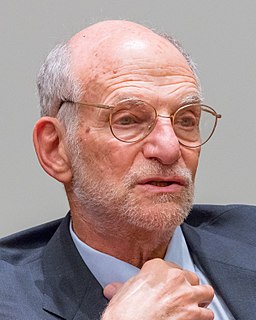A Quote by Jill Bolte Taylor
Most of the different types of cells in our body die and are replaced every few weeks or months. However, neurons, the primary cell of the nervous system, do not multiply (for the most part) after we are born. That means that the majority of the neurons in your brain today are as old as you are. This longevity of the neurons partially accounts for why we feel pretty much the same on the inside at the age of 10 as we do at age 30 or 77.
Related Quotes
Unlike the heart or kidney, which have a small, defined set of cell types, we still do not have a taxonomy of neurons, and neuroscientists still argue whether specific types of neurons are unique to humans. But there is no disputing that neurons are only about 10 percent of the cells in the human brain.
There are 100 billion neurons in the adult human brain, and each neuron makes something like 1,000 to 10,000 contacts with other neurons in the brain. Based on this, people have calculated that the number of permutations and combinations of brain activity exceeds the number of elementary particles in the universe.
The well-being of a neuron depends on its ability to communicate with other neurons. Studies have shown that electrical and chemical stimulation from both a neuron's inputs and its targets support vital cellular processes. Neurons unable to connect effectively with other neurons atrophy. Useless, an abandoned neuron will die.
Every thought, feeling, and emotion creates a molecule known as a neuropeptide. Neuropeptides travel throughout your body and hook onto receptor sites of cells and neurons. Your brain takes in the information, converts it into chemicals, and lets your whole body know if there's trouble in the world or cause for celebration. Your body is directly influenced as these molecules course through the bloodstream, delivering the energetic effect of whatever your brain is thinking and feeling.
In my view, while the single neuron is the basic anatomical and information processing-signaling unit of the brain, it is not capable of generating behaviors and, ultimately, thinking. Instead, the true functional unit of the central nervous system is a population of neurons, or neural ensembles or cell assemblies.
For the last century of neuroscience, lots of people have tried to control neurons using all sorts of different technologies - pharmacology (drugs), electrical pulses, and so on. But none of these technologies are precise. With optogenetics, we can aim light at a single cell, or a set of cells, and turn just that set of cells on or off.

































